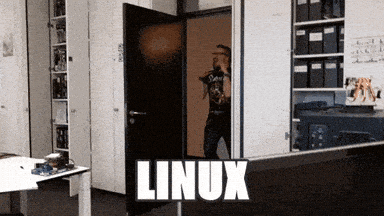A vision for a sustainable IT can’t work without open source
Open source is leading the space of green IT
I recently stepped down as Co-Chair of the CNCF Technical Advisory Group for Environmental Sustainability, which I started 2.5 years ago, making a place for one who currently can dedicate more time to that fantastic group. So, as you can assume, I want to talk today about sustainability in IT which can’t be without open source.
Usually, sustainability posts start with how important it is to be sustainable, how much screwed we are, or that your consumer behavior kills the planet. But in short, it is not your problem. The majestic enterprises who are responsible for it make you believe so. In the end, it might still be about your energy demand, but who am I to judge you?
The momentum of sustainability, which is a very old topic, is gaining speed in IT. Maybe driven by Gen Z, maybe because people wonder if they could do something more valuable than useless. Who knows. For me, it turns out to be the question:
What could I do that utilizes my skills and knowledge to impact this planet positively?
Because picking up trash in the forest or shutting down every unnecessary light in the apart might do its thing, but it doesn’t feel like it can make a difference.
So, what are your skills, knowledge and interests you can utilize to make a positive impact?
This was the birth of the idea to bring sustainability to open source and, especially, to cloud native. Soon, after finding some fellows, we drafted a work group proposal for the Cloud Native Computing Foundation, that eventually, some months later, became a Technical Advisory Group — Environmental Sustainability. That’s where my FOSS sustainability journey all started.
This makes me realize that without FOSS, we will not have any sustainable IT.
The Problem within the Roots of IT
I often have the chance to meet people who hate it if I call their IT traditional, classic, or legacy. “We have to do it this way; we have done this for decades; there is no other way to provide it with that reliability.”
Excuses.
No one wants to invest money to throw out all that old stuff, start from scratch and do it a new way. I don’t want to call it a better way; that would be pretentious. But a change is urgently needed.
You need tons of people to keep the old stuff running; many people don’t want to learn something new, too, and there are too few new people joining the IT market. Through that spiral of death, you drastically have increase the payment. Because people who could do something new are becoming rare.
Gif by BhumiPednekar on Giphy
To acknowledge and adress this problen is crucial to understand that change doesn’t come from just bringing new tools. But that you actively have to seek, argue, fight for getting this things moving.
What is Sustainable IT?
Sustainable IT, also called Green IT or Eco-friendly IT, combines technology with environmental awareness to reduce the impact of information technology on the environment.
While there are many aspects to it, the three pillars are:
Energy Efficiency: Reducing the energy consumption of hardware and software is one of the key goals of Sustainable IT. However, this works best if you have modern, flexible systems. #legacyIsHarmful
E-/Waste Management: This is not only about ensuring that your data center trash is recycled correctly but that you enter a circular economy. Also, good starting points are to use hardware as long as possible, which could be contra-productive to energy efficiency.
Sustainable procurement: It doesn’t help if you want to change the planet. You also have to demand this from your vendors. Commercial solutions generally aren’t interested in becoming sustainable, except it is a KO criteria for not buying them.
Nothing of this works with the right awareness and measurement to implement accountability.
How Open Source Contributes to Sustainability
Open Source is clearly leading that space.
While we are talking, or reading, there are more than two hand full of open source organizations with hundreds of contributors working on specific fields to make IT more green. I summarized recently some of the bigger ones here on the Linux Foundation Europe blog.
But why does FOSS leads this space?
Social contributions. People work on those topics because they love it, because they have the feeling to do something, and because they can really provide some change.
Overall, FOSS has a very large lever: multiplication. Over 90% of all kind of software runs with FOSS (as programing language, including libraries, middleware, runtime environemnts and so on).
Improving only one component just a little bit will be mutliplied, changing many components, you can start feeling the change. On top of that, bring a new mindset, a new principle to design solutions, and even new technologies and all of the sudden you have a meassurable change.
Gif by ctmagazin on Giphy
My favorite part in it is, that sometimes it is enough just to raise the awareness to drive someone else thoughts and innovative thinking to new solutions.
When we started the working group for environmental sustainability a guy showed up at one of these meetings, telling he loved the initiative and proposed to an open soruce tool he contributes at to propose making it carbon aware. It didn’t took that long that the community has developed this feature, extending its capabilities and providing an additional purpose to be carbon aware. If you are interested you can read more about the KEDA carbon aware operator.
You need FOSS for a sustainable IT vision
That’s the reason why crafting a sustainable IT vision requires FOSS. And exactly this seeding, that growth, is what I would like to see in any project.
A vision to become carbon aware, to become carbone efficient and to max out possibilities will be build on solutions that are not there yet, that need your commitment and time. All the given foundations digging into a specific field offer you a wide range of options to start.
The community gives this commitment, and you can build on top of that, or even better, become by yourself a contributor and investor to accelerate the innovation and change, in a sustainable IT.
The Treasure Hund
If you visit
https://terraform.tf
you will be redirected to the OpenTofu website. Just a big love and high five for that fun move, whoever it was ✋
I hope you liked what you read, see you later 👋
p.s. if you want to sign up for the Zeitgeist of Bytes newsletter or share it with a friend or colleague, that’s the way to go:





